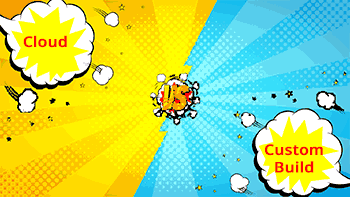When you’re looking to embark on an intranet implementation for your business, you will – doubtless – have loads of questions. If there are other stakeholders too, you’re going to need to be able to assuage their queries with the right information to ensure they’re on board also. From costs to ongoing maintenance and any pitfalls you need to watch out for, MyHub Intranet Solutions has got you covered with the help you need to answer those burning intranet FAQs and ensure that your project’s process is smooth… Read on!
What Sort Of Intranets Are There – And How Do I Know Which One’s Right For Us?
You may know you need an intranet but, from the outset, you’ll be wondering what types of solutions are available, and how you know which one is right for you. Firstly, there are two common types of intranet solutions. On the one hand, you could opt for something custom-built from scratch for your organization. This option would be owned and maintained by your company and hosted in-house. On the other hand, you could go for a cloud-based intranet, which is hosted virtually and typically created from existing software that is adapted to your company’s unique specifications. Either option can be focused on the objective of enabling people to easily access documents and information within the business infrastructure, as well as enhancing communication through all levels of your organization. To better determine the right fit for you, consider the next question.
 How Do The Pros And Cons Of Each Solution Stack Up?
How Do The Pros And Cons Of Each Solution Stack Up?
First, let’s consider the custom, in-house solution. An immediate pro is that this option would be designed exactly to your specifications. Instead of adapting existing software to fit, you’re creating software that will be 100% fit for purpose for your business. From the look and feel of the design to the apps, structure, and functionality, it will be made for you from the outset. A con of this approach, however, is that, by starting from scratch, the time it takes to get your intranet up and running is usually much longer. The other thing to consider is what the hosting will mean. With an intranet solution housed on your own servers, you will need to invest in additional technical support and maintenance. The pro is that these people will be on-site and able to walk you through any trouble-shooting, face to face, but it also means that if there are any in-house issues or problems with your system, your intranet will go down with it.
Conversely, cloud-based intranet options are typically faster to get up and running, as they utilize existing pieces of software that are adapted for you. The general feeling is that cloud-based solutions are more flexible too – able to easily grow in size and structure with your business; the sky’s the limit, if you will (pun intended!) Hosted off-site, it’s accessible for everyone, no matter where they are or what sort of device they are using to connect. It also means that should weather, unreliable power or other technical issues affect your facility, the intranet is still able to be accessed and used so your employees can keep working. Lastly, a cloud-based solution typically doesn’t require the same investment in technical resources. Your monthly fee will be an ongoing cost, but it will include technical support and maintenance provided by experts who specialize in intranets for a range of organizations.
 What Will It Cost?
What Will It Cost?
When taking on a significant IT project, people are always going to be mindful of the cost. Actual budgets will need to be determined based on what functionality and size you need your intranet to be, but there are some things you can still consider. In terms of the two solutions here, the most marked difference is in how and when the spend needs to take place.
With an in-house intranet solution, the up-front cost for development tends to be quite high, with custom-created software and, typically, the hiring of specialist human resource to install and maintain it. Once the intranet is up and running, however, maintenance costs are generally quite low; you own the intranet and don’t need to pay a regular fee in order to access it. The only long-term cost you have is the employment of the IT person, or team, required to maintain your internal intranet.
A cloud-based intranet solution avoids the large upfront cost, which can help with budgeting in the short-term. The difference is in the long-term cost, as there will be a monthly fee to continue to access your intranet for the duration of time that you are using the system. This can be a good scenario for a company to spread the cost and help with cash flow.
Are There Risks I Need To Consider?

What Resources Will I Need?

If you’re opting for a cloud-based solution, you won’t have so much of an outlay for equipment, but your most important relationship will be with a hosting company that can bring their technical expertise to your project and support your system as it needs it. Internally, you will still need some advocates responsible for content management, but the technical capabilities will be largely taken care of by your hosting partner.
What Potential Pitfalls Do I Need To Work To Avoid?
No matter which type of intranet solution you choose, there are things that can cause issues on your path to a successful implementation, or later down the track. The biggest one, of course, is what happens if your intranet goes down for some reason. If all of your important documents are stored only on your intranet, it can be hard to keep working until your system is up and running again, so consider a separate backup.

While we’ve provided a snapshot of the important questions to ask yourself – or that you might be asked by others – ahead of your intranet implementation, this list is not entirely exhaustive. If you have other questions or would like to know more about the process of bringing your intranet project to life, get in touch. Our team of experts will talk you through all the other ins and outs, drawing on their vast experience across hundreds of intranets.


 What Will It Cost?
What Will It Cost?




0 Comments